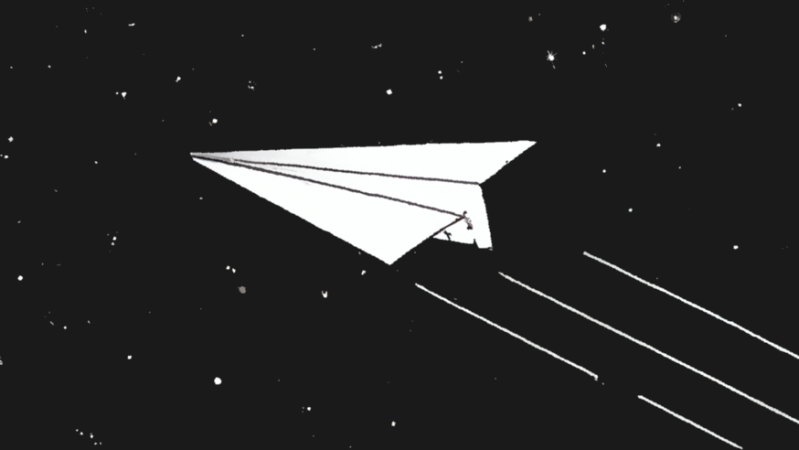Every now and again we stumble across something a bit unexpected, and today that’s the fact that there have been quite a few efforts at launching paper planes from as close to space as possible. The current record for the highest paper plane launch is a whopping altitude of 35,043 meters.
 That altitude is considerably short of what would be called “space”, but it’s still an awfully long way up and the air there is very thin compared to on the surface. Space is generally (but not universally) considered to be beyond 100 km above sea level, a human-chosen boundary known as the Kármán line. 35 km is a long ways into the stratosphere, but still within Earth’s atmosphere.
That altitude is considerably short of what would be called “space”, but it’s still an awfully long way up and the air there is very thin compared to on the surface. Space is generally (but not universally) considered to be beyond 100 km above sea level, a human-chosen boundary known as the Kármán line. 35 km is a long ways into the stratosphere, but still within Earth’s atmosphere.
Even so, that doesn’t mean there haven’t been efforts to go considerably higher. There was a Japanese proposal to drop airplanes made from special heat-resistant paper from the International Space Station, roughly 400 km above Earth. Success would show that low-speed, low-friction atmospheric reentry is feasible — for pieces of paper, anyway. But one of the challenges is the fact that there is no practical way to track such objects on their way down, and therefore no way to determine where or when they would eventually land.
There have been many other high-altitude paper plane launches, but the current record of 35,043 meters was accomplished by David Green in the United Kingdom as part of a school project. Such altitudes are in the realm of things like weather balloons, and therefore certainly within the reach of hobbyists.
As for the airplanes themselves, the basic design pictured here probably won’t cut it, so why not brush up on designs with the Paper Airplane Design Database? Even if you don’t send them into the stratosphere (or higher), you might find something worth putting through a DIY wind tunnel to see how they perform.
















So litter from the stratosphere. I have the same problem with helium balloons.
Both paper and weather balloons are very quickly biodegradable. Very small price to pay for science.
That makes me want to play “Glider” on Windows 3.1 or System 7 again. ^^
This reminds me of a a STEM outreach project I worked on during my bachelor’s studies! :D
https://www.youtube.com/watch?v=r3ZTHBIdXbw
It’s more fun when an airliner zooms by :
https://youtu.be/vu-6wWvUyIw?t=262
What does a paper airplane look like that has to fly at both 35km and ground level?
Old, old comment I know, but an interesting question. Up at 35km and -25C indicated speeds would be effectively zero until the true airspeed gets well up there. So whatever you launch it’s basically just falling until its true airspeed gets pretty high, and there’s very little drag so it will accelerate pretty quickly. Then by the time it starts actually flying instead of falling it is starting to get up to pretty high Mach numbers, solidly transonic I would think, even though the indicated speed would still be low. I would say that your classic paper dart would probably be a better shape at that altitude than down where it usually flies. Just a gut reaction though.
I guess nobody remembers P.A.R.I.S.
https://www.theregister.com/Tag/Paris/Paper%20Aircraft%20Released%20Into%20Space/
The one that started them all
I have a L.O.H.A.N pint glass on my desk. RIP Lester Haines
…as do I. Will raise a glass to Lester. Someone needs to make a “Lester” Playmobil figure.
Has anyone considered dropping a paper plane out of a cubesat?
The next step is obvious: we have to develop a camera drone that can both fly in space and into the atmosphere just in order to track the paper airplane as it flies through both.